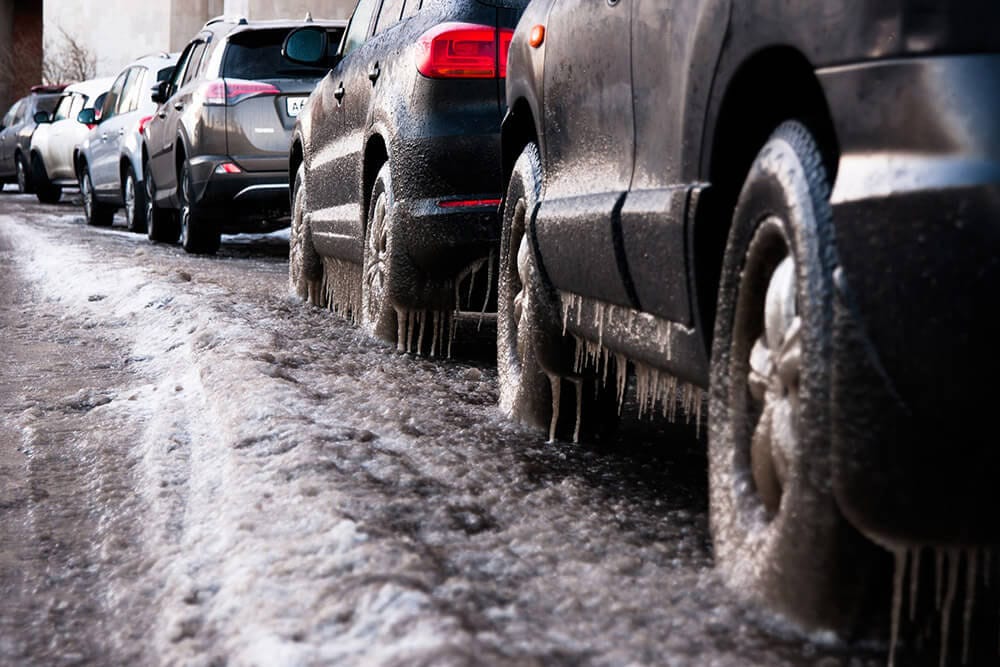Who Is at Fault When a Driver Doesn’t Clear Snow Off Their Car?

Who is at fault when a driver doesn’t clear snow off their car in MD? We’ll look at laws and guidelines in the state of Maryland regarding how vehicle owners should handle snow and ice on their vehicles. If a driver doesn’t exercise reasonable caution and their carelessness injures another person, they may be held liable for damages.
After learning more about who is at fault when a driver doesn’t clear snow off their car, contact the office of Belsky & Horowitz, LLC to discuss your case. We offer help for car accident victims and families in Baltimore and surrounding Maryland counties.
Is It Illegal to Drive with Snow on Your Car in Maryland?
Is it illegal to not clean snow off your car in Maryland? In the state of Maryland, there is no law explicitly stating that you must clean snow and ice off your vehicle before taking it on the roadways. So, in short, it’s not specifically against the law to have snow on your car roof, frost on your windows, or ice on your windshield.
A handful of states—like Pennsylvania, New Hampshire, Connecticut, Michigan, Rhode Island, and New Jersey—legally compel vehicle owners to remove snow and ice before driving. But it’s likely that our somewhat more moderate temperatures have diminished the urgency in the eyes of legislators of passing a law like this in Maryland. Ice and snow-removal laws have been proposed in the past, and endorsed by news outlets like the Baltimore Sun, but none have yet passed in our state.
However, while you may not be arrested for failing to clean your car roof after a storm, there are sections of the Maryland Driver’s Manual published by the Maryland Motor Vehicle Administration (MVA) that speak directly to safe auto practices in inclement weather like ice and snow. The manual states that drivers taking a car out under icy or snowy conditions should keep “windows and lights clear,” and explicitly instructs vehicle owners to: “Remove all ice and snow from your vehicle before driving.”
Can a Driver Be Held Liable for an Accident Caused by Snow on the Car?
It’s clear that driving with snow and ice covering your vehicle is not the safest way to operate it. Icy windows can obstruct visibility, making it difficult for drivers to see other cars or pedestrians, or to react to the conditions of the road and traffic. Snow piled atop the roof of a car can slide onto the windscreen or into the roadway. There have even been cases in which ice has flown off the top of a moving vehicle and shattered the windshield of another car.
If someone’s failure to take the extra ten minutes to scrape ice off their car results in a crash that injures another person, it’s very likely they will be found liable. In a personal injury case, the plaintiff (the injured party taking legal action against the defendant) needs to show negligence. Negligence means that a person failed to behave with the level of care a reasonable individual would have exercised under the same circumstances.
If a person does not show a reasonable level of care by removing the ice and snow from their car before driving it—as most people would have done—they will most likely be liable for the injuries their negligence causes. For your own safety and the safety of others, it’s always a good idea to take the little bit of extra time needed to clean the snow from your vehicle before you leave.
Safety Tips for Driving in Snow and Ice
Snow and ice create a unique set of driving conditions that can greatly increase the chance of an accident. It’s especially important for drivers who are not familiar with driving in snowy conditions—and those whose vehicles have not been properly equipped for adverse weather conditions—to exercise extreme caution when taking to the roads.
According to the Maryland Driver’s Manual, there is no such thing as a “completely safe” speed when driving in snow and ice. Factors such as sun and shade, black ice, the amount of plowing and salting, road surface texture, and other elements can make it extremely difficult to predict the condition of the road from one street or block to the next. A driver needs to remain constantly alert and on guard, aware that a slippery patch can appear at any second without warning.
Taking proactive steps to avert potential dangers can help you get to your destination safely. Before driving after a storm, Maryland drivers can take note of the following tips for driving in snow and ice:
- Remember that stopping distances are increased on slippery surfaces. Maintain more-than-adequate distance between you and the vehicle in front of you.
- Keep a slow, even speed, without rapid acceleration or sudden braking.
- Begin gently testing your brakes a good distance before reaching the intersection to check road surfaces for slipperiness.
- Remain well under the posted speed limit. Speed limits were created for the best of conditions, not snowy or icy roads.
- Take turns cautiously and avoid any sharp steering.
- Always use headlights in adverse weather conditions.
- Make sure your tires are in good condition and have sufficient tread. Use chains or snow tires if needed.
- If possible, only take a vehicle with four-wheel drive on snowy or icy roads.
- Keep windshield wipers in good shape and windshield wiper fluid filled.
- Try to keep a full tank of gas. Fill up your car’s gas tank if a storm is predicted.
- Keep an emergency supply kit in the trunk of your vehicle. This should include emergency supplies like a shovel, ice scraper, flashlight and batteries, flares or triangles, chains, blankets, and cat litter to increase traction if stuck.
When you have done all you can to stay safe under adverse driving conditions, the poor behaviors of another driver can be especially disheartening. When these poor behaviors result in injury to you or a loved one, we are here to help you recover financially. We can represent you in taking legal action to hold others accountable for negligence, preventing similar instances of harm from occurring again in the future. Contact Belsky & Horowitz, LLC to schedule a free case consultation.





